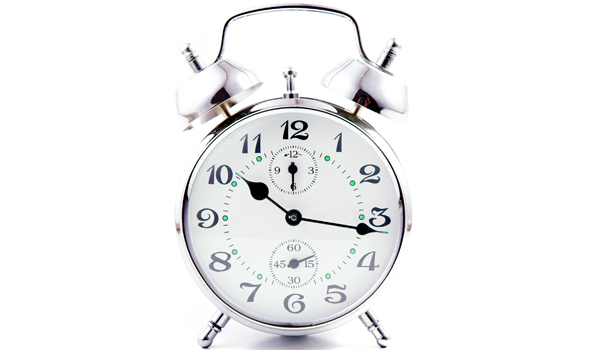Why Do We Observe Daylight Saving Time?

At 2:00 a.m. local this Sunday, most of the United States, except Hawaii and Arizona, will turn their clocks forward an hour, transitioning from standard time to daylight saving time. But the annoyance of resetting all the clocks in your houseor forgetting to, and consequently throwing off your entire daymay make you question why we bother with this routine in the first place.
Daylight saving time is most often associated with the oh-so-sweet extra hour of sleep in fall and the not-so-nice loss of an hour in spring. But some of the original reasons for resetting our clocks twice a year include saving on electric bills, and having more daylight hours for retailers, farmers, sporting events and other activities that benefit from a longer day.
As far back as the 1700s, people recognized the potential to save energy by jumping clocks ahead one hour in the summer Benjamin Franklin famously wrote about it but the idea was not put into practice until the 20th century. During both World Wars, the United States and Great Britain observed daylight saving time as a way to cut back on electricity usage.
After the war, U.S. states were free to choose whether to observe daylight saving time and the calendar start dates of the time change. This resulted in time confusion for travelers and newscasters, so in 1966, Congress enacted the Uniform Time Act, which stated that states that observed daylight saving must follow a uniform protocol: Throughout the country, daylight saving time would begin on the first Sunday of April and end the last Sunday of October.
In 2007, the Energy Policy Act of 2005 went into effect and extended daylight saving time by four weeks, starting it three weeks earlier in spring and ending it one week later in fall. Daylight saving now begins on the second Sunday in March and ends on the first Sunday of November. That extra week gives trick-or-treaters a precious extra hour of candy-gathering before sunset.
- Who Started Daylight Saving Time?
- Are Pets Affected By Daylight Saving Time?
- Top 10 Spooky Sleep Disorders
Got a question? Send us an email and we'll crack it.
Sign up for the Live Science daily newsletter now
Get the world’s most fascinating discoveries delivered straight to your inbox.

Andrea Thompson is an associate editor at Scientific American, where she covers sustainability, energy and the environment. Prior to that, she was a senior writer covering climate science at Climate Central and a reporter and editor at Live Science, where she primarily covered Earth science and the environment. She holds a graduate degree in science health and environmental reporting from New York University, as well as a bachelor of science and and masters of science in atmospheric chemistry from the Georgia Institute of Technology.









